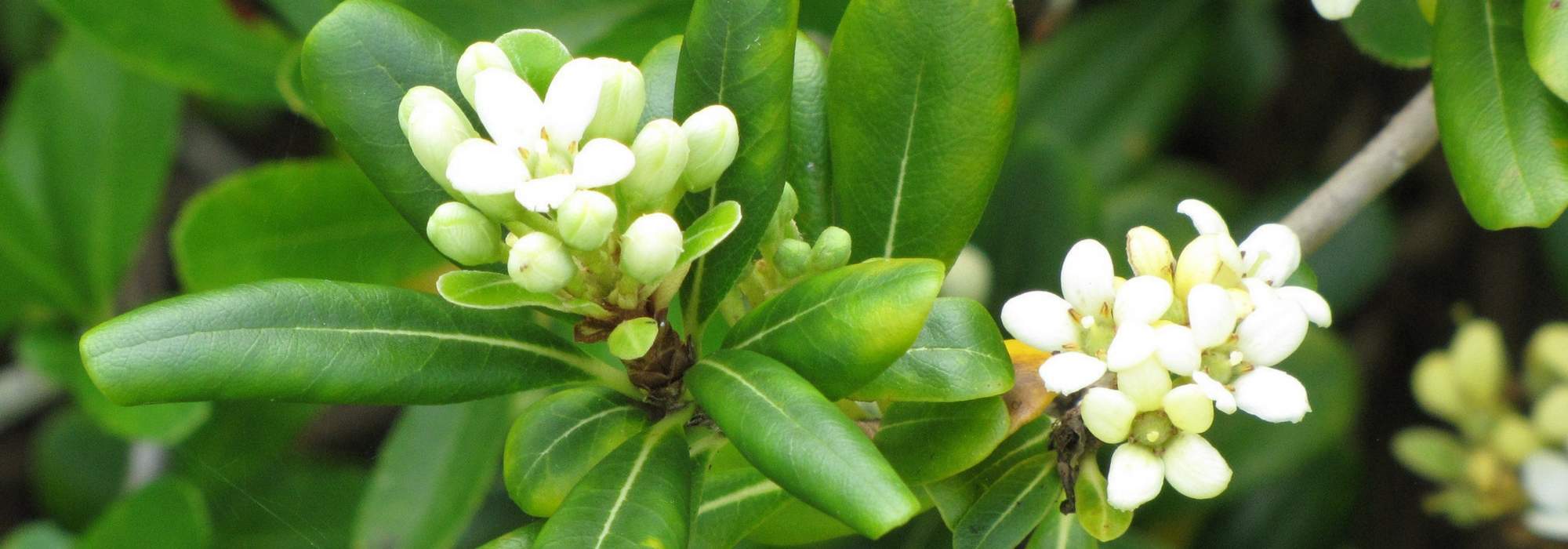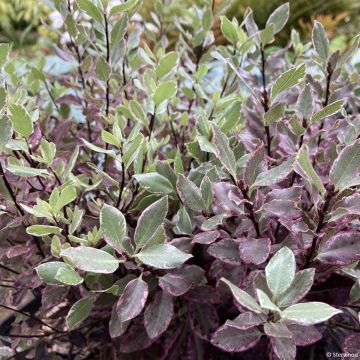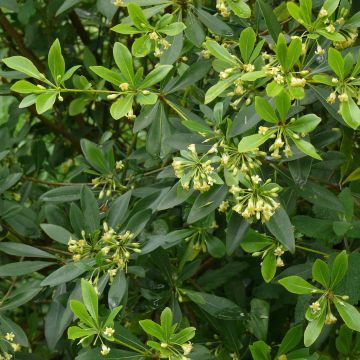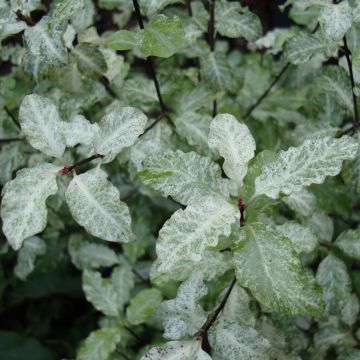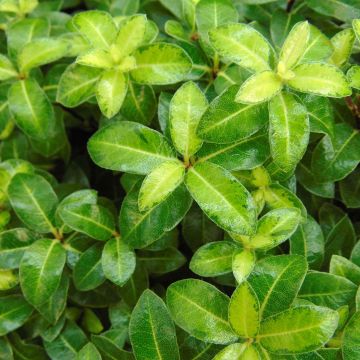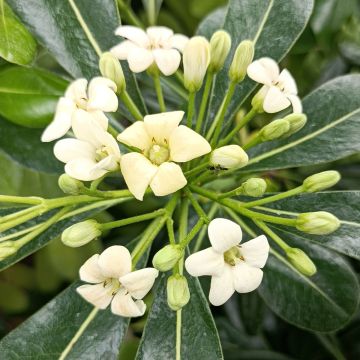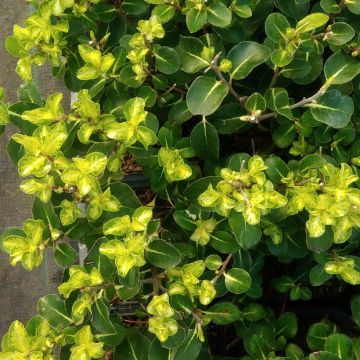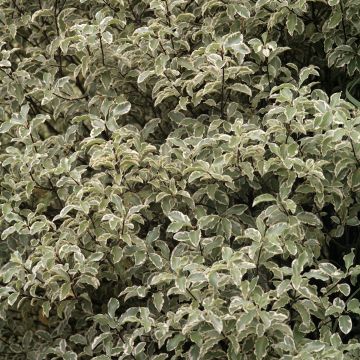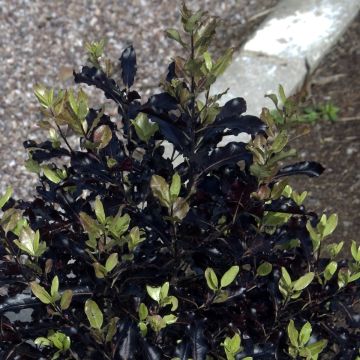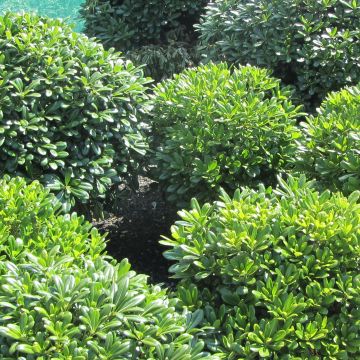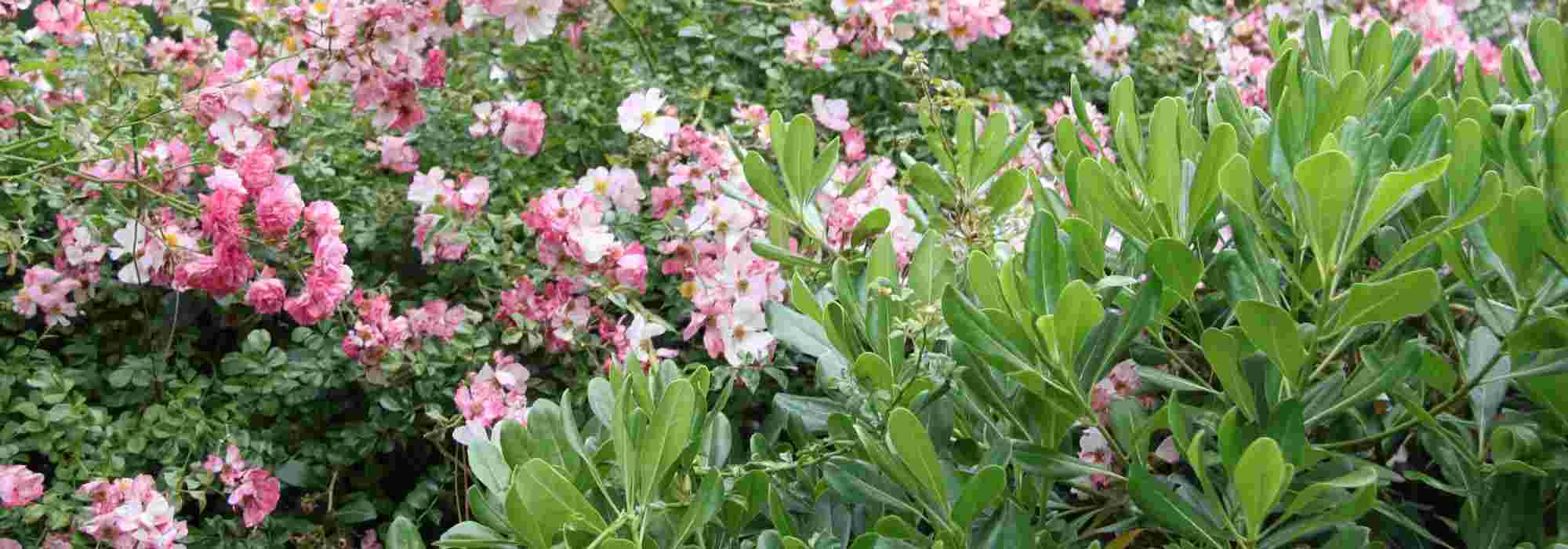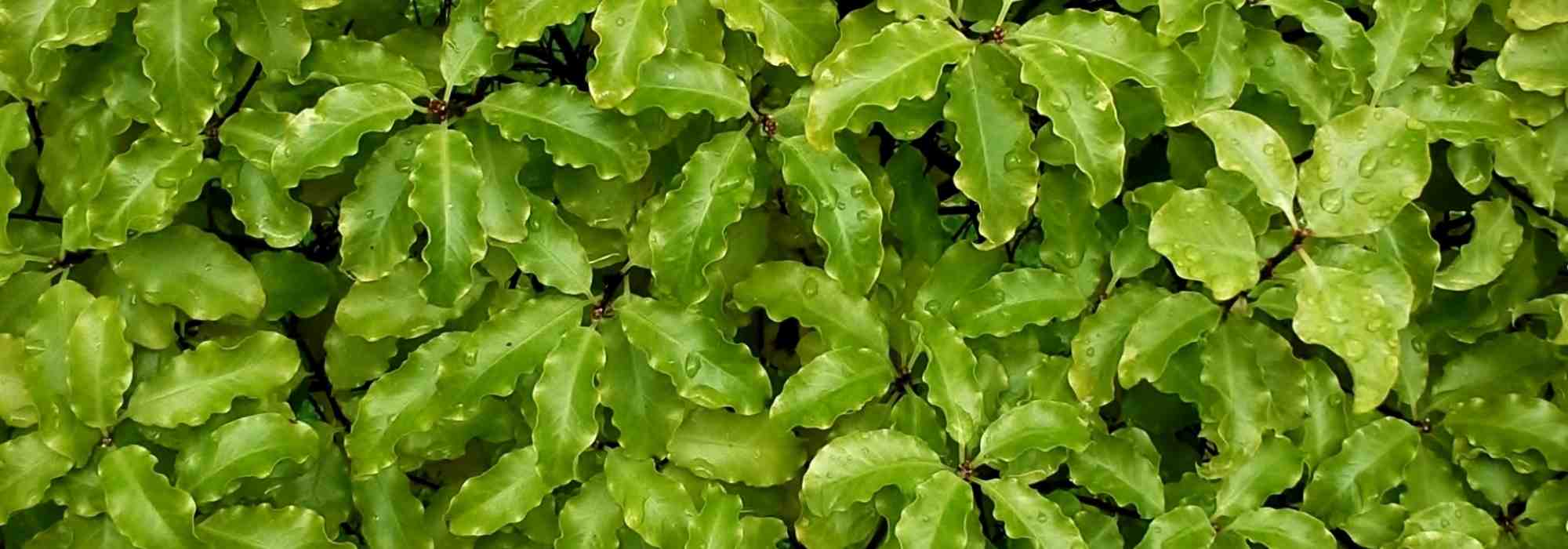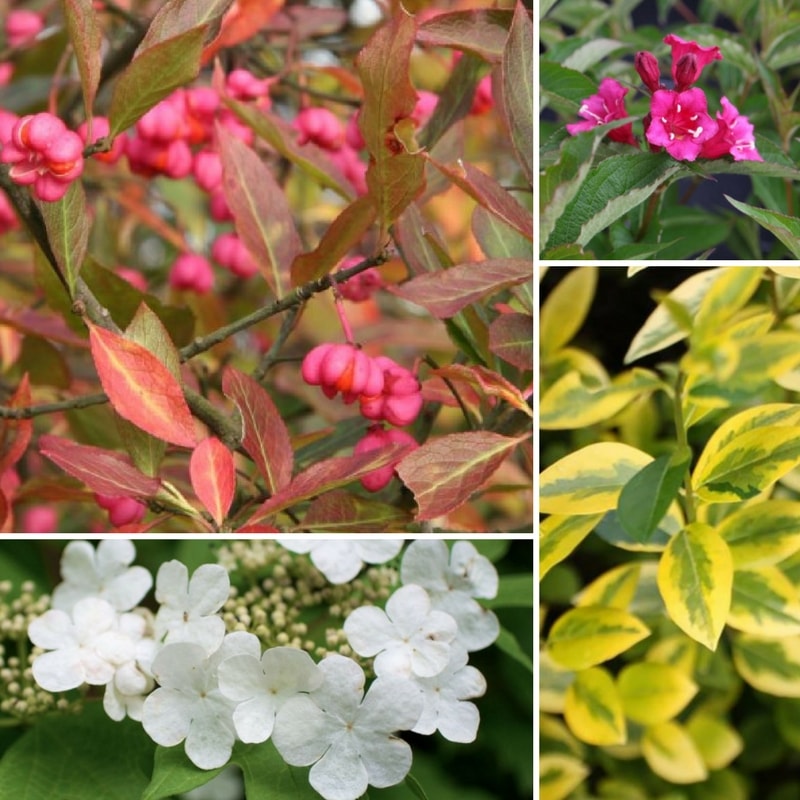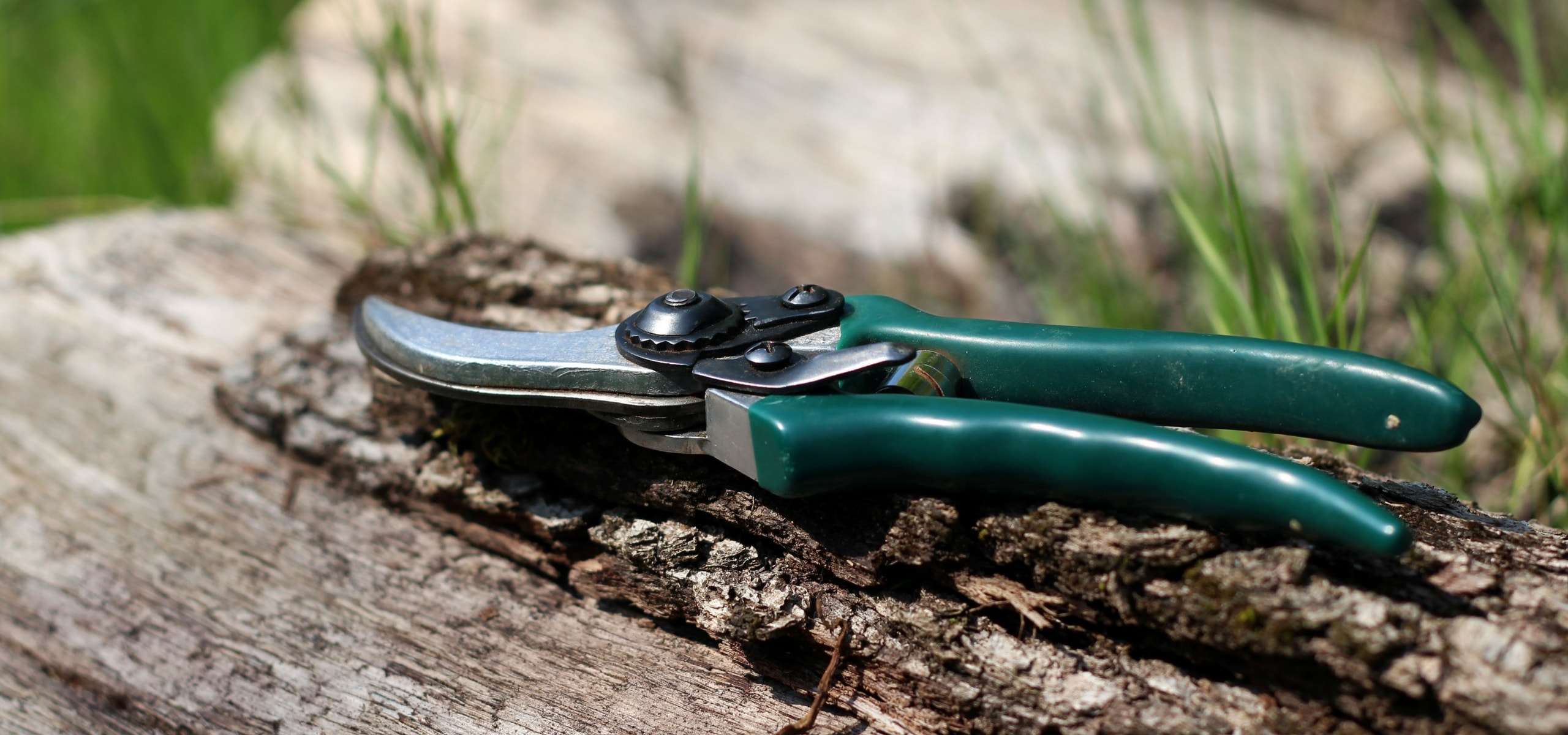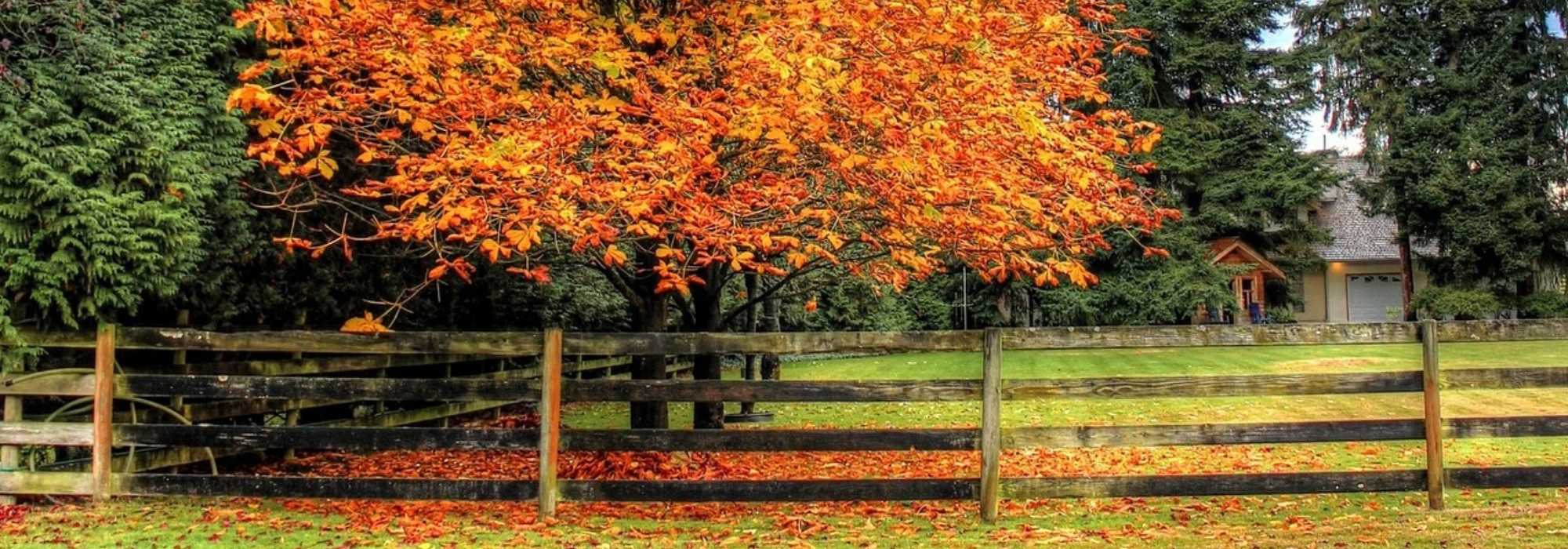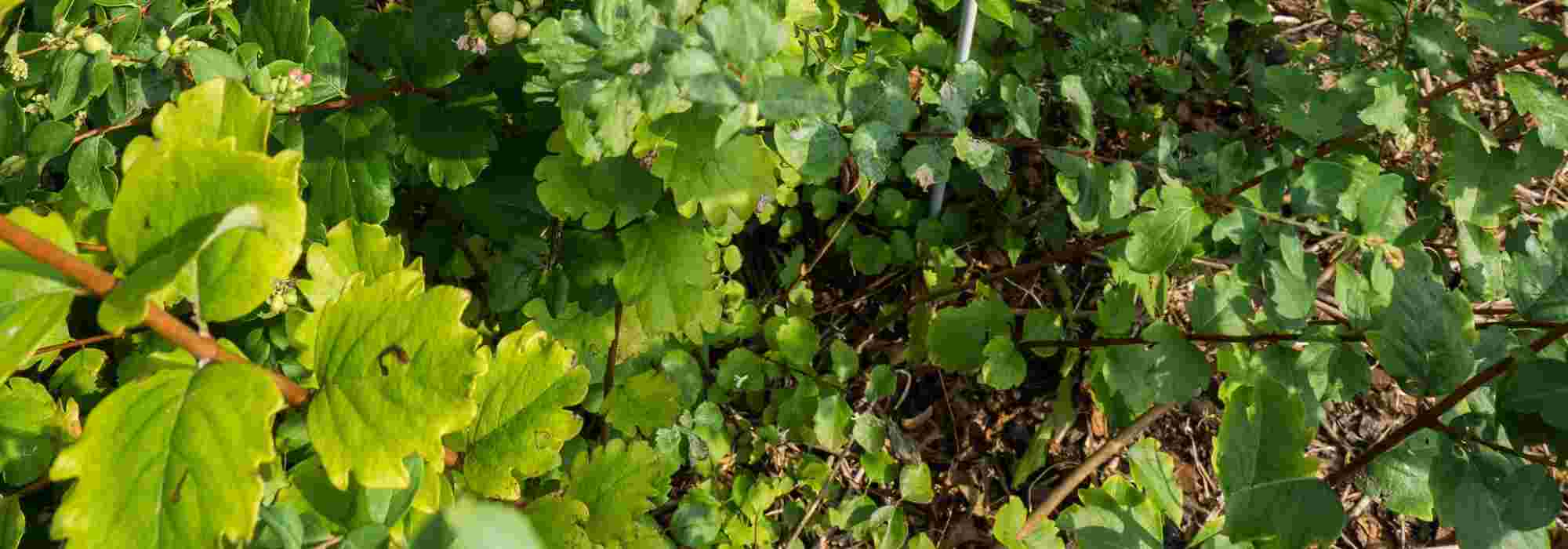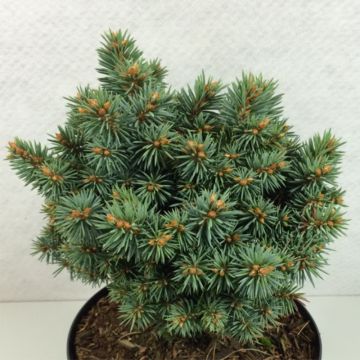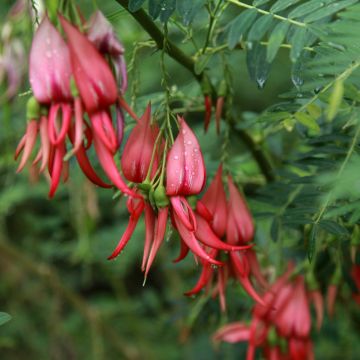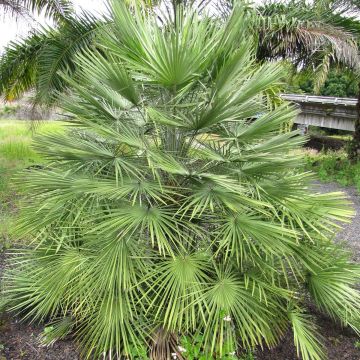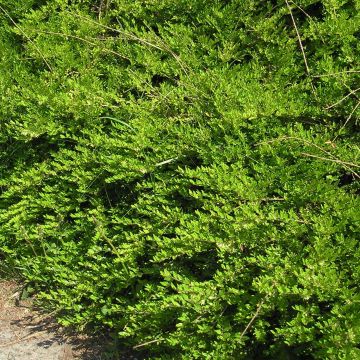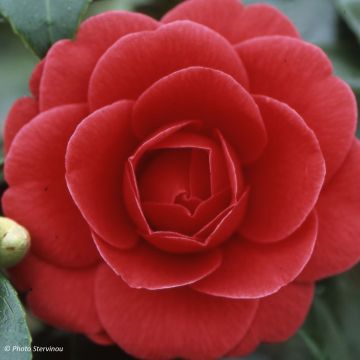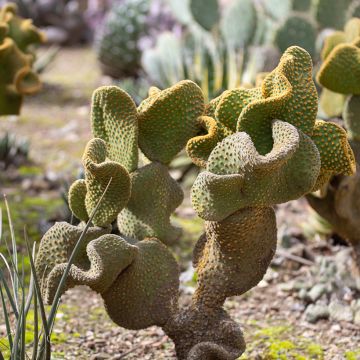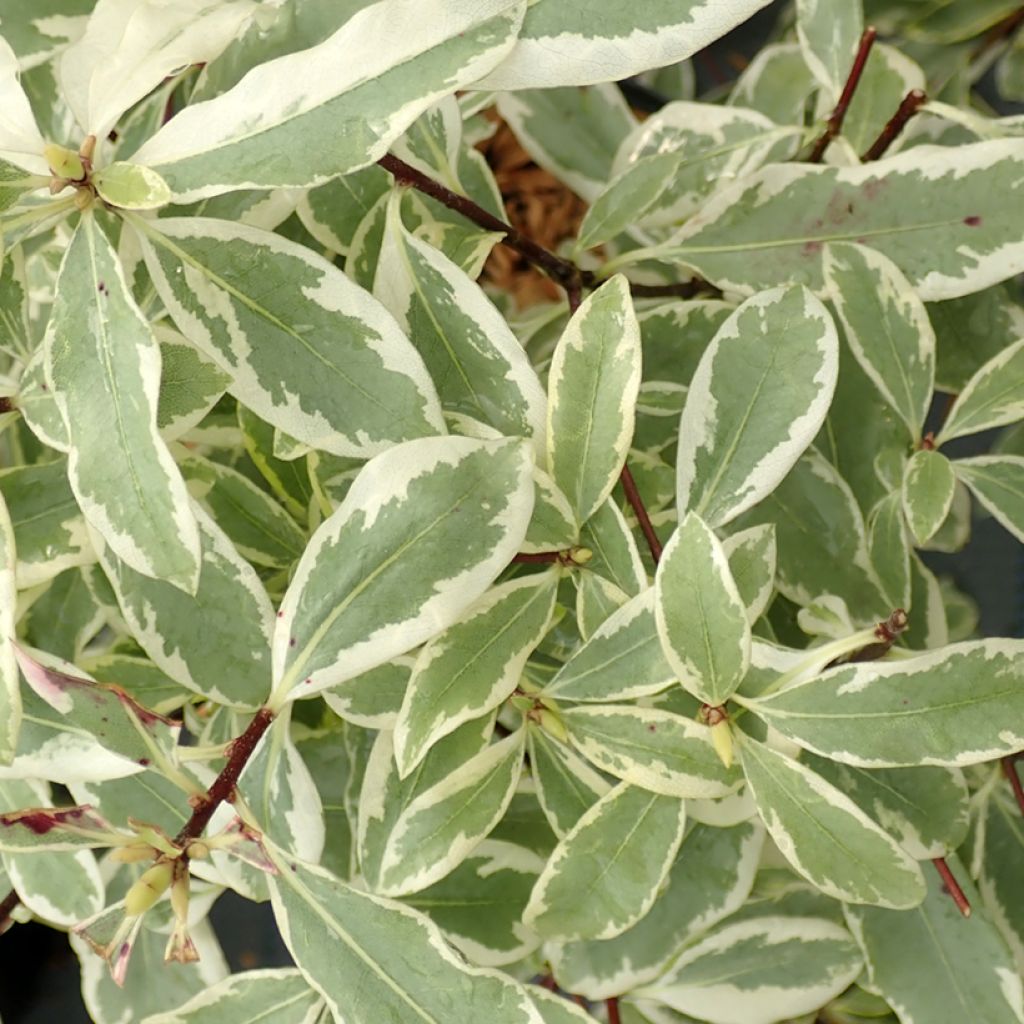

Pittosporum eugenoides Variegatum - Bois citron panaché
Pittosporum eugenoides Variegatum
Pittosporum eugenoides Variegatum
Lemonwood, Tarata
Re-shipping order. Beautiful vine-plant specimen with well-rooted and ramified growth. Variegated foliage with new leaves showing a greener shade. Well-packaged. Plant as soon as received in a pot, in partial shade, accompanied by a Pittosporum Heaven Scent to stagger the flowering. Looking forward to its establishment and the next fragrant flowering.
Nathalie F., 20/05/2023
Special offer!
Receive a €20 voucher for any order over €90 (excluding delivery costs, credit notes, and plastic-free options)!
1- Add your favorite plants to your cart.
2- Once you have reached €90, confirm your order (you can even choose the delivery date!).
3- As soon as your order is shipped, you will receive an email containing your voucher code, valid for 3 months (90 days).
Your voucher is unique and can only be used once, for any order with a minimum value of €20, excluding delivery costs.
Can be combined with other current offers, non-divisible and non-refundable.
Home or relay delivery (depending on size and destination)
Schedule delivery date,
and select date in basket
This plant carries a 24 months recovery warranty
More information
We guarantee the quality of our plants for a full growing cycle, and will replace at our expense any plant that fails to recover under normal climatic and planting conditions.


Would this plant suit my garden?
Set up your Plantfit profile →
Description
Pittosporum eugenoides Variegatum, sometimes locally called Lemonwood, is a large evergreen shrub from New Zealand, not very hardy, but with many qualities, which should make it very welcome in our gardens spared by heavy frosts. Much less known than its relative Pittosporum tobira, widely planted as a hedge on our Mediterranean and Atlantic coasts, this lemonwood offers even more fragrant spring flowers and a more elegant variegated scented foliage than that of its cousin. Resistance to drought and cold for these two species are comparable, and they appreciate the same growing conditions. Very useful in a dry or seaside garden, this pittosporum grows quickly and can withstand pruning. It can be inserted into an informal hedge or a large shrub bed.
Pittosporum eugenoides Variegatum is a shrub from the Pittosporaceae family. Its non-variegated ancestor is native to the mountains of New Zealand. Rather conical in its early years, it eventually forms a large dense and oval bush, even a small tree reaching 5 to 6 m (16 to 20ft) in height and 3 to 4 m (10 to 13ft) in width. Its dimensions will be more modest and its growth will be slower in Mediterranean areas. Its bark is grey. Its black-coloured branches bear bright olive green leaves margined with creamy white edges. They are alternate, entire, ovate, thin but leathery, with undulate edges. They are medium-sized, reaching 5 to 12 cm (2 to 5in) in length and 2.5 to 4 cm (1 to 2in) in width. When crushed, the leaves release a strong citrus fragrance, which has earned this bush its nickname of lemonwood. Flowering occurs from late April to June, depending on the climate. The small flowers, 5 to 6 mm (1in) in diameter, pale yellow-green in colour, emit a sweet fragrance reminiscent of honey. They are gathered in clusters that appear at the end of the branches and are followed in autumn by the formation of a few fruits. These are small ovoid capsules, about 3 to 7 mm (1in) long. The name Pittosporum comes from the Greek pitta, resin, and sporos, seed.
Hardy down to -10 °C in well-drained soil, Pittosporum eugenoides Variegatum requires a light, fertile soil, not too wet in winter, a warm position, sunny or even shaded in the afternoon in hot climates, and protected from cold and dry winds. It tolerates salt spray, which allows it to be used in a seaside garden. It can also be planted at the back of a flower bed. To accompany it, consider other Pittosporums (P. heterophyllum, daphniphylloides, tobira Variegatum), Pistacia lentiscus, Olearia, Mytus, Oleander, escallonias... A little further from the sea, it will also accompany Eleagnus, Pineapple Broom (Cytisus battandieri) or the Russian Olive (Elaeagnus angustifolia).
Pittosporum eugenoides Variegatum in pictures
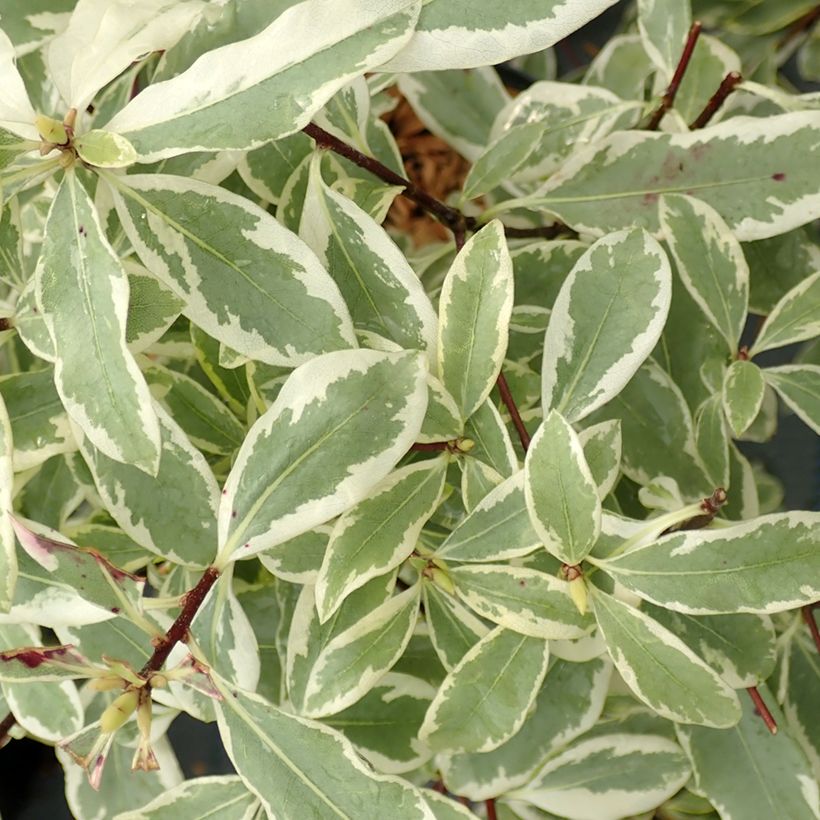

Plant habit
Flowering
Foliage
Botanical data
Pittosporum
eugenoides
Variegatum
Pittosporaceae
Lemonwood, Tarata
Cultivar or hybrid
Other Pittosporum
View all →Planting and care
Pittosporum eugenoides 'Variegatum' should preferably be planted in spring in a cool climate, or in September-October in a dry and hot climate. Plant it in a fertile, light, dry, not too chalky and well-drained soil. Its roots dislike waterlogged soils in winter. When planting, mix leaf compost and coarse sand with your garden soil at a ratio of 50%. Water your plant generously once or twice a week to promote growth. Under these conditions, it will withstand short frosts of around -10°C (14°F), when sheltered from prevailing winds. Plant it along a south-facing wall in regions with harsh winters. Under a cooler climate, cover it with a winter veil or shelter it in a frost-free veranda for the winter season. To help it branch out during the first years of planting, pinch the young shoots. In mature subjects, trim the branches that appear disheveled at the end of the growing season. It is quite possible to shape it into a ball or a hedge, as it tolerates pruning very well, even severe pruning. In summer, watering will be necessary for the establishment of the plant during heatwaves and drought. This should be plentiful but spaced out, allowing the soil to dry out between waterings.
Planting period
Intended location
Care
Planting & care advice
-
, onOrder confirmed
Reply from on Promesse de fleurs
Similar products
Haven't found what you were looking for?
Hardiness is the lowest winter temperature a plant can endure without suffering serious damage or even dying. However, hardiness is affected by location (a sheltered area, such as a patio), protection (winter cover) and soil type (hardiness is improved by well-drained soil).

Photo Sharing Terms & Conditions
In order to encourage gardeners to interact and share their experiences, Promesse de fleurs offers various media enabling content to be uploaded onto its Site - in particular via the ‘Photo sharing’ module.
The User agrees to refrain from:
- Posting any content that is illegal, prejudicial, insulting, racist, inciteful to hatred, revisionist, contrary to public decency, that infringes on privacy or on the privacy rights of third parties, in particular the publicity rights of persons and goods, intellectual property rights, or the right to privacy.
- Submitting content on behalf of a third party;
- Impersonate the identity of a third party and/or publish any personal information about a third party;
In general, the User undertakes to refrain from any unethical behaviour.
All Content (in particular text, comments, files, images, photos, videos, creative works, etc.), which may be subject to property or intellectual property rights, image or other private rights, shall remain the property of the User, subject to the limited rights granted by the terms of the licence granted by Promesse de fleurs as stated below. Users are at liberty to publish or not to publish such Content on the Site, notably via the ‘Photo Sharing’ facility, and accept that this Content shall be made public and freely accessible, notably on the Internet.
Users further acknowledge, undertake to have ,and guarantee that they hold all necessary rights and permissions to publish such material on the Site, in particular with regard to the legislation in force pertaining to any privacy, property, intellectual property, image, or contractual rights, or rights of any other nature. By publishing such Content on the Site, Users acknowledge accepting full liability as publishers of the Content within the meaning of the law, and grant Promesse de fleurs, free of charge, an inclusive, worldwide licence for the said Content for the entire duration of its publication, including all reproduction, representation, up/downloading, displaying, performing, transmission, and storage rights.
Users also grant permission for their name to be linked to the Content and accept that this link may not always be made available.
By engaging in posting material, Users consent to their Content becoming automatically accessible on the Internet, in particular on other sites and/or blogs and/or web pages of the Promesse de fleurs site, including in particular social pages and the Promesse de fleurs catalogue.
Users may secure the removal of entrusted content free of charge by issuing a simple request via our contact form.
The flowering period indicated on our website applies to countries and regions located in USDA zone 8 (France, the United Kingdom, Ireland, the Netherlands, etc.)
It will vary according to where you live:
- In zones 9 to 10 (Italy, Spain, Greece, etc.), flowering will occur about 2 to 4 weeks earlier.
- In zones 6 to 7 (Germany, Poland, Slovenia, and lower mountainous regions), flowering will be delayed by 2 to 3 weeks.
- In zone 5 (Central Europe, Scandinavia), blooming will be delayed by 3 to 5 weeks.
In temperate climates, pruning of spring-flowering shrubs (forsythia, spireas, etc.) should be done just after flowering.
Pruning of summer-flowering shrubs (Indian Lilac, Perovskia, etc.) can be done in winter or spring.
In cold regions as well as with frost-sensitive plants, avoid pruning too early when severe frosts may still occur.
The planting period indicated on our website applies to countries and regions located in USDA zone 8 (France, United Kingdom, Ireland, Netherlands).
It will vary according to where you live:
- In Mediterranean zones (Marseille, Madrid, Milan, etc.), autumn and winter are the best planting periods.
- In continental zones (Strasbourg, Munich, Vienna, etc.), delay planting by 2 to 3 weeks in spring and bring it forward by 2 to 4 weeks in autumn.
- In mountainous regions (the Alps, Pyrenees, Carpathians, etc.), it is best to plant in late spring (May-June) or late summer (August-September).
The harvesting period indicated on our website applies to countries and regions in USDA zone 8 (France, England, Ireland, the Netherlands).
In colder areas (Scandinavia, Poland, Austria...) fruit and vegetable harvests are likely to be delayed by 3-4 weeks.
In warmer areas (Italy, Spain, Greece, etc.), harvesting will probably take place earlier, depending on weather conditions.
The sowing periods indicated on our website apply to countries and regions within USDA Zone 8 (France, UK, Ireland, Netherlands).
In colder areas (Scandinavia, Poland, Austria...), delay any outdoor sowing by 3-4 weeks, or sow under glass.
In warmer climes (Italy, Spain, Greece, etc.), bring outdoor sowing forward by a few weeks.






























